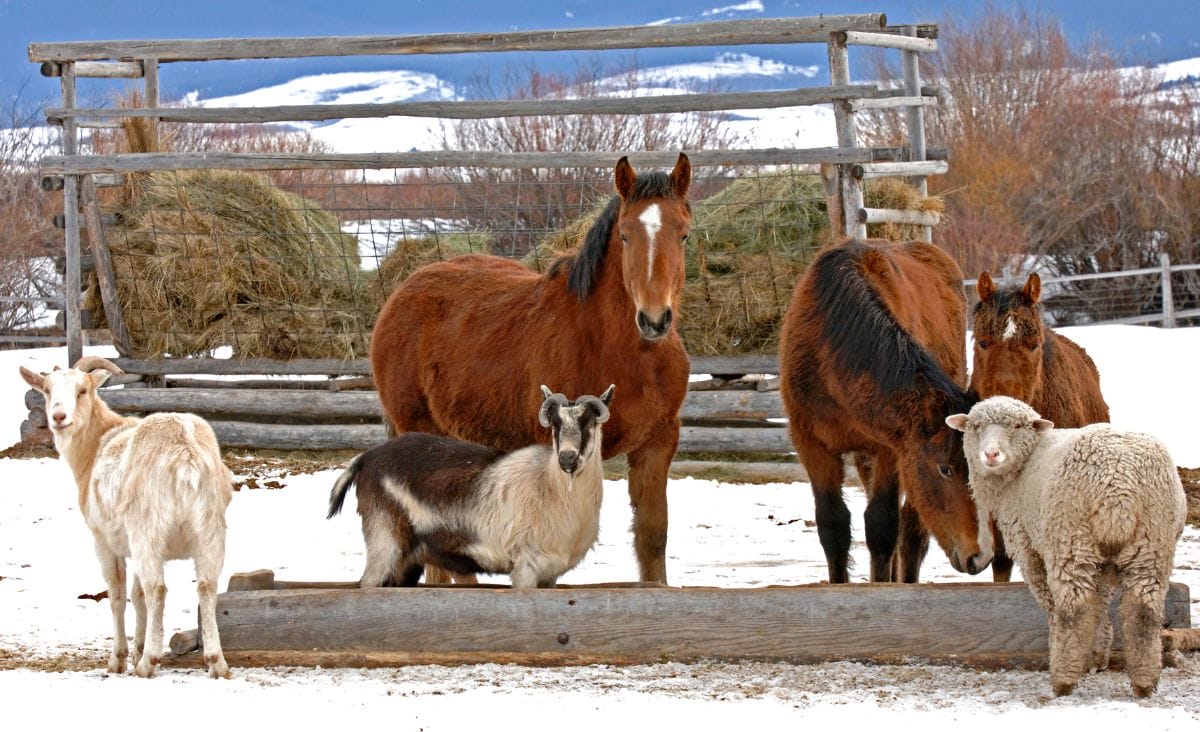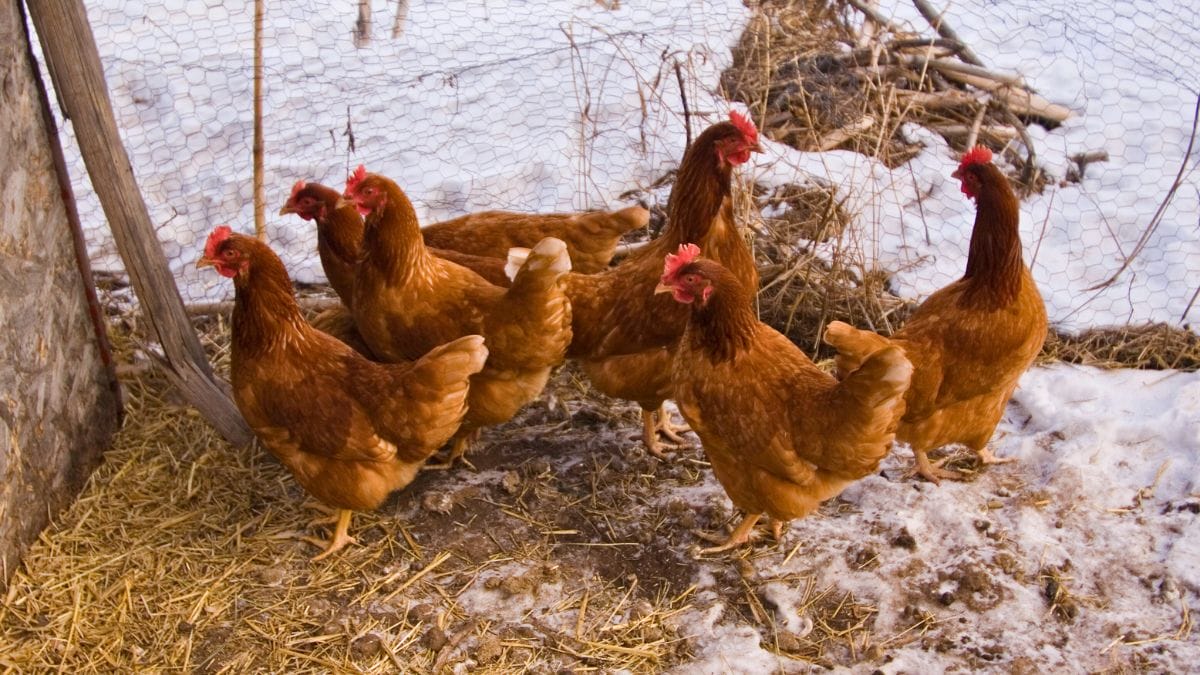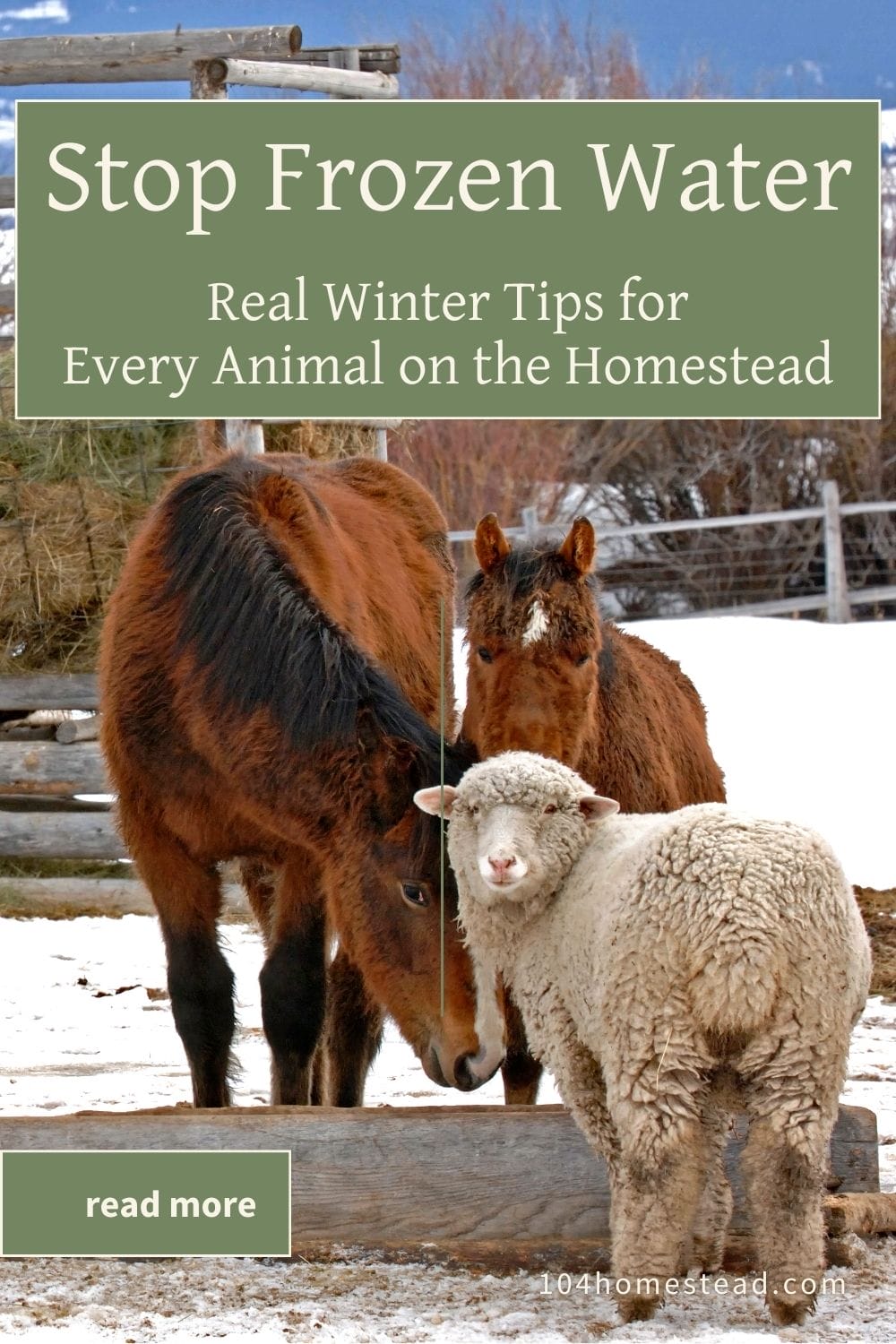How to Keep Livestock Water from Freezing All Winter Long
Learn simple, reliable ways to keep livestock water from freezing in winter. From large stock tanks to tiny waterers, here’s what works.

Winter always brings a little extra hustle to the homestead, especially when the temperatures dip and everything you set out to do suddenly takes twice as long. One of the biggest daily challenges, at least for me, is keeping fresh water in front of the animals. It doesn’t matter if you’ve got a handful of chickens or a whole barn of larger livestock. If the water freezes, you’re right back out there breaking ice and refilling buckets.
Over the years here in Maine, I’ve tried pretty much every trick in the book, from heated bases to DIY insulation to hauling warm water a few times a day when things get especially stubborn. Some options work great for certain animals and setups, while others only help a little. Once you figure out the right method for each species, winter chores feel a whole lot easier.
If you’re figuring out the rest of your winter routine, I’ve broken down how I get my own animals ready for winter here in Maine without adding a ton of extra work to my day.
Why Water Matters Even More in Cold Weather
Their bodies rely on water for pretty much everything, including staying warm in the cold. They don’t drink less in winter. If anything, getting dehydrated makes them run down and sick easier. If the water’s solid, they’re not drinking and you’re spending half the day breaking it open. So here’s how I handle water for the big guys, the mid-sized crew, and the small animals.
Large Animals, Like Cows and Horses
Cows and horses go through water fast, so you need a setup that holds up in real cold.
Heated Stock Tank
The simplest way I’ve found to keep big tanks from freezing is a heated stock tank. They have built-in heaters that keep the water just warm enough so it doesn’t freeze. If you can, choose a style with automatic shut-off so it’s not chewing through power all day. You can find sizes from 50 gallons up to several hundred, depending on how many animals you’re watering.
Best for: Large groups of cattle or horses when you want something you can mostly set up and forget.
Floating Tank Heaters or De-Icers
If you already have a stock tank, a floating tank heater or submergible de-icer is a good option. They sit in the tank and keep the top from turning solid, so you can keep using what you already have. Look for one rated for your specific climate, because some only handle light freezes, while others can deal with the deep cold.
Best for: When you’ve got a tank that works fine and you just need something simple to keep it from icing over.
Insulated Tank Covers
An insulated cover helps the tank hold its heat so the water doesn’t freeze as fast. Some stock tank manufacturers make insulated wraps specifically for their products, or you can make a DIY version with insulating materials like foam or straw bales around the tank.
Best for: Mild to average winters where a little extra insulation keeps things thawed a bit longer.
Keeping Water Moving
Sometimes just keeping the water circulating with a submersible pump is enough to keep ice from forming. This can work well in places where winter isn’t brutal, or as a backup alongside a heater when it’s really cold.
Best for: Slightly warmer winters where you can get by with circulation instead of a full-on heater.
Medium-Sized Animals, Like Goats, Sheep, and Pigs
Goats, sheep, and pigs usually drink from smaller troughs or buckets, and those freeze fast without some kind of heat.
Heated Buckets and Bowls
For goats, sheep, and pigs, heated buckets make life a lot easier. These buckets plug in and maintain water temperature just above freezing. Make sure they’re rated for outdoor use and kept out of direct rain or snow so you’re not risking any electrical issues. And keep cords out of reach, because curious goats especially will chew on anything they can get their teeth on.
Best for: Mid-sized animals in cold weather when you want a straightforward, plug-it-in-and-walk-away setup.
Insulated Buckets
If a heated bucket isn’t an option, insulating your bucket can go a long way. Some DIYers use two buckets, placing the smaller inside a larger one and filling the gap with insulating material like straw or foam. It won’t keep things totally thawed, but it does help and cuts down on how often you’re knocking ice loose.
Best for: Off-grid setups or spots where cords aren’t an option you’re okay with a bit of DIY.
Regular Refills with Warm Water
In cases where electricity isn’t available, manually refilling buckets with warm water a few times a day can prevent freezing. It’s extra work, but with just a few animals, it’s manageable and keeps it from icing over. Adding saltwater bottles (sealed containers filled with saltwater) to the water bucket can also help delay freezing, as the salt solution absorbs and retains warmth longer.
Best for: Setups with no power where you’re home enough to swing by a few times a day.
Small Animals, Like Chickens, Ducks, and Rabbits
Small animals = tiny waterers, and those freeze faster than anything.
Heated Water Bases & Fountains
For chickens and ducks, heated water bases are designed specifically for poultry waterers. These plug-in bases sit under the waterer and keep it from freezing. Pay attention to whether the base is meant for metal or plastic waterers so you don’t melt or crack anything.
There are also now heated nipple waterers available, which keep water from freezing without the need for a separate base. These are great for chickens and gamebirds, but they aren’t ideal for ducks, who need a deeper water source that allows them to fully submerge their heads for preening and clearing their nostrils.
Best for: Anyone with electricity in the coop who wants the water to stay thawed without constant refills. If you’re working with an unheated coop, you might also want the simple ways I keep my chickens warm all winter without relying on electricity.
Heated Dog Bowls
Another option for chickens and ducks is a heated dog bowl. They can take a beating, which is why I like them. Just be sure the animals can reach the water comfortably and that the cord is protected.
Best for: Chickens and ducks in smaller coops where you want one simple heated bowl that can pull double duty.
Heated Water Bottles
For rabbits, I like heated water bottles that hang on the cage. They keep the drinking end from freezing shut so you don’t have to swap out bottles all day. If you’re dialing in your rabbit setup for the season, you can pair this with my guide to choosing winter bedding that keeps outdoor rabbits warm.
Best for: People with caged rabbits who want the water to stay open without constant refills and thawing.
Insulated Waterers + Passive Heat
If you don’t have access to power in your coop, insulating the waterer can help. One method is placing a smaller water container within a larger, insulated one. Some people also place a thermal mass (like a hot stone or a bottle of warm saltwater) next to the waterer to keep temperatures up a bit longer.
Best for: Small animals where it only freezes once in a while, or in spots with no power.
Frequent Water Checks
For smaller animals, another effective but hands-on method is to simply check and refill water several times a day. Ducks, in particular, will keep water thawed by splashing in it as long as it doesn’t freeze solid. This method takes extra effort, but it’s effective when no electricity is available.
Best for: Ducks and other small animals in mild climates or homesteads without power. This works best if you’re home enough to keep an eye on things and top off water during the day.

And if your chickens get cranky about snow, I’ve shared how I handle free-ranging in winter so they stay active even when everything’s buried.
Extra Tips and Tricks for All Animals
These little tricks help, no matter what animals you’ve got.
Saltwater Bottles
For smaller containers or in cases where other solutions aren’t available, try placing a sealed bottle of saltwater in the water trough. Saltwater doesn’t freeze as fast, and the bottle holds onto warmth a bit longer, so the ice takes longer to form.
Insulate from Below
Propping containers up on something helps them stay warmer than if they’re sitting right on the frozen dirt. Straw, old rugs, or foam pads can work well for this purpose, though be cautious about any materials animals might chew.
Winter Water Problems: Your Questions Answered
Once the real cold hits, everyone starts running into the same problems. Here are the most common ones I hear every winter.
Pin this so you’ll have these winter watering solutions handy when the temperatures drop.

Cold weather already keeps us busy. Getting the water figured out takes one big headache off your plate. Different setups need different fixes, but there’s always something you can do to keep the water open. Once you land on the right setup for your animals, winter watering turns into just another quick chore.
What’s your go-to method for keeping livestock water ice-free in winter? Share your tips or struggles with the cold season below!
